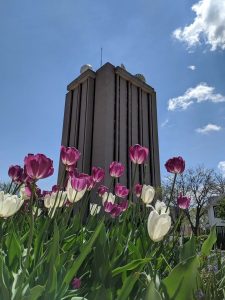
Astronomically, spring occurs when the sun’s rays strike the equator at noon at an angle that is directly overhead.
This particular time varies from year to year due to variations in Earth’s orbit about the sun. In the Northern Hemisphere, the vernal, or spring, equinox (“equi” meaning “equal,” and “nox,” “night”) occurs sometime between March 19 and 23, but often on March 20 or 21.
This year, Northern Hemisphere spring arrived at around 10:49 p.m. Thursday. This was the first day of autumn in the Southern Hemisphere. The last time the vernal equinox occurred this early was in 1896.
During the equinoxes, all locations on Earth experience 12 hours of daylight and 12 hours of darkness. The sun rises due East and sets due West. The seasons result from the tilt of our planet and its yearly circling of the sun.
Spring marks the transition from winter to summer so meteorologists define March through May as the three months of spring. By that definition, spring already started.
We might also define spring as the day on which, if there is precipitation, it is more likely to be in the form of rain than snow. For southern Wisconsin, that occurs later in the month of March.
We also may define spring based on the appearance of a particular flower, the blooming of certain trees, or the return of specific migrating birds. These are the phenological signs of spring.
Some mark spring by the increase in the number of potholes.
Whatever the definition, during spring the length of daylight hours is increasing and the air is warming. That’s welcome news for many people, particularly this year when many are staying home to avoid COVID-19.
Steve Ackerman and Jonathan Martin, professors in the UW-Madison department of Atmospheric and Oceanic Sciences, are guests on WHA radio (970 AM) at 11:45 a.m. the last Monday of each month.

